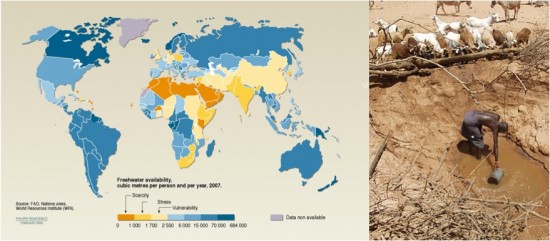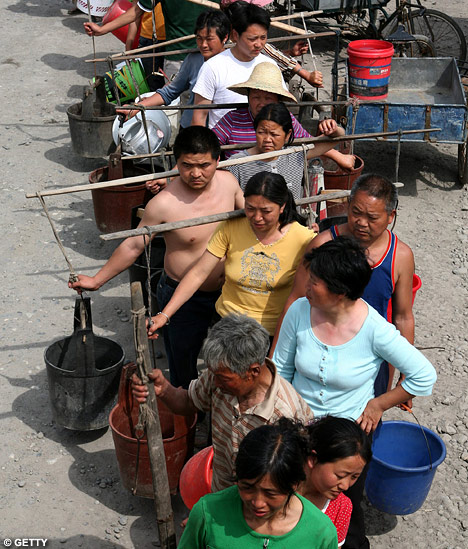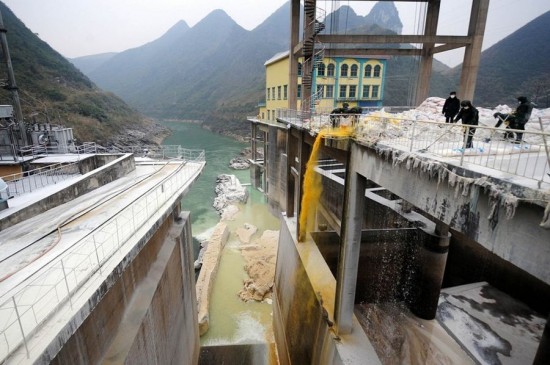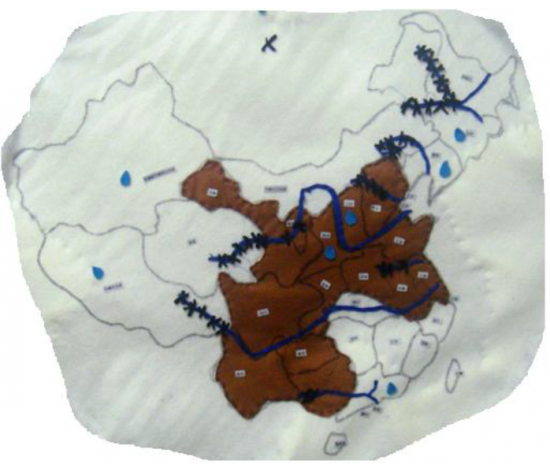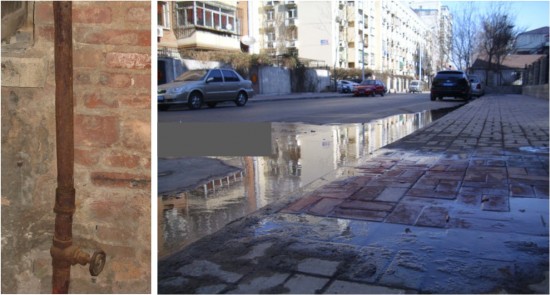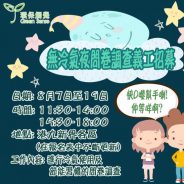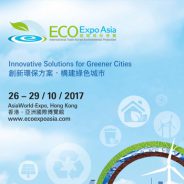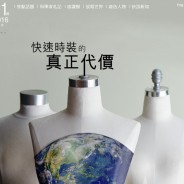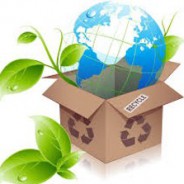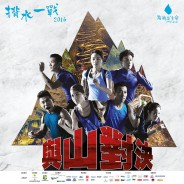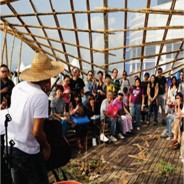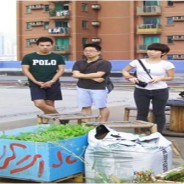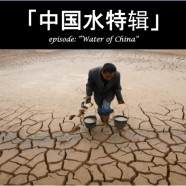
Tags
Share This
「中国水特辑 」
‘Water of China’ (specific episode: ‘World Water Day 2012‘)
关于此特辑 ABOUT THE EPISODE
为响应2012年 ‘世界水日’ (3月22日), 香港理工大学设计学院「亚洲生活风尚设计研究实验室 」于 “绿活创、作、行” (Sustainable MAKE, ACT, DO –‘SMAD’) 的网络平台上特别推出一个「中国水特辑」! 此特辑将展示一系列由上海、广州及香港等城市汇集的水消费现像及个案 [1] ,希望藉此引发对日常食水耗用进一步的反思和行为上的改变 。 In response to the ‘World Water Day’ 2012, the DESIS unit of the Asian Lifestyle Design Research Lab School of Design, H.K. Polytechnic University is now showcasing a specific episode of “WATER of CHINA” on the Sustainable MAKE, ACT, DO (‘SMAD’) platform. The episode will exhibit a series of cases and phenomena of daily water consumption in Hong Kong, Guangzhou and Shanghai for provoking further discussions and hopefully changes of unsustainable practices of water consumption in urban China.
请点击链接查看案例 click this link and view cases:http://www.sd.polyu.edu.hk/sldi/
附注 NOTE:
背景资料 BACKGROUND INFORMATION
稀缺的资源 World Scarcity
水是地球上最宝贵的资源之一, 同时亦是最稀缺的。 因为地球所有总水量中 (地球表面百分之71覆盖着水)只有0.8%是可供人类日常饮用和使用的。 Water is one of earth’s most valuable resources, and one of its most scarce. Since only 0.8% of the earth’s total water is available for everyday human use.
但由于水的消耗量预计于2007年和2025年之间将急剧增加 (据美国 「 世界资源研究所 」估计,发展中国家在此段期间用水量将增加约百分之50,而发达国家 [2] 则将增加约百分之18 (Zabarenko, 2011) 。但剧另一资料显示,未20年世界用水量将会倍增,为人口增长速度的两倍 。 Mirhaydari, 2011), 到2025年近三分之二的世界人口将生活在供水紧张[3] 的情况下, 而全球亦有超过四分之一人的人口将面临绝对缺水 (Evans, 2011)。 But as water consumption is predicted to increase drastically between 2007 and 2025 (50% growth in developing countries and 18% in developed ones according to the World Resources Institute estimation (Zabarenko, 2011). But according to another source, in the next 20 years, world water consumption will be doubled at a growth rate twice that of population. Mirhaydari, 2011), up to two thirds of the world’s population would be living under water-stressed conditions, and one quarter of it will likely to face absolute water scarcity by 2025 (Evans, 2011).
附注 NOTE:
[3] 水文学家通常以人口-水耗等式 评估水稀缺的程度。 如当一个地区年供水量低于人均1700立方米时,此地区便会评为处于“水紧张” 状态。 供水量低于人均1000立方米时便评为面临“缺水” ,而低于500立方米的便定义为“绝对稀缺” 。 Hydrologists typically assess scarcity by looking at the population-water equation. An area is experiencing “water stress” when annual water supplies drop below 1,700 m3 per person. When annual water supplies drop below 1,000 m3 per person, the population faces “water scarcity”, and below 500 cubic metres “absolute scarcity”. (Water for Life, n.d.)
中国水危机 Water Crisis in China
今天中国正面对着严重的水资源短缺的问题。其经济的快速发展 ;用水需求的大幅增加 ;水源的严重污染和再加上近年来由气候变化引起的极端濒繁的涝旱也是对其水资源一个严重的威胁。China is confronting serious water shortage nowadays. Coupled with its rapid economic development in recent years, a substantial increase of water demand, and serious pollution of water sources. The recent years of extreme weather caused by climate change is also a serious threat to China’s water resources.
总结导致中国水资源稀缺的困境五个主要因素 : Five major factors are causing the dilemma of water shortage in China:
(I) 稀缺 scarcity
- 中国是全球13个正面临严重缺水问题的国家之一。 China is one of 13 countries that are experiencing serious water scarcity.
- 中国佔全球四份之一的人口,卻只有世界总淡水量的6%。 China has 1/4 of the world’s population but only 6% of its fresh water.
- 中国人均水资源佔有量约2200立方米, 仅为全世界人均佔有量的25% (年缺水总量约为400亿立方米。)。 The per capita freshwater resource (2,220 m3) of the country is only 25% that of the world’s average (annual shortage is 40 billion cubic metres) .
- 其四份之一的人口(约3亿人)无法获得安全饮用水。 about 1/4 of its population (around 300 million) have no access of clean potable water .
- 中国现时661多个城市中便有400多个出现缺水问题 。 Of the 661 cities in China, more than 400 have water shortage problem (33% of these cities are scarce of water, while 17% are regarded as badly scarce of water).
- 降雨量及水资源分布不平均。 北方主要是干旱 。( 平均量每年人均可用水量只有1100立方米, 而于北京地区的可用水量则下降至不足500立方米。) Rainfall and water distribution is uneven. The Northern China is mostly arid (The average amount of available water is only 1,100 m3 per year per capita, while in the Beijing area it drop under 500 m3.) (China’s Thirst, 2011; Economy & Lieberthal, 2007; Globalization Monitor, 2011).
(II) 污染 pollution
- 大约70%的中国河流和湖泊因电厂、化工、造纸、纺织及食品生产设施而污染。Around 70% of China’s rivers and lakes are polluted from sources of power plants, chemical, paper, textile and food production facilities (China’s Rivers, 2012).
- 约有40%的地表水因被过度污染而不适宜任何人畜饮用、工业或农业用途 [4]。 About 40% of China’s surface water is so polluted and is unsuitable for any human, industrial or agricultural use.
- 中國七大水系 [5] 的淡水中約有三成已不能飲用。 Approximately, 30% of the fresh water from the China’s seven major river systems is undrinkable (Globalization Monitor, 2011).
- 约90%的蓄水层 已 受污染 。About 90% of water in aquifers is now polluted. (Economy & Lieberthal, 2007)
最近于2012年1月发生的广西龙江镉污染事件。The recent incident (2012, January) of cadmium pollution at Longjiang, Guangxi.
(III) 干旱 drought
- 中國的旱災次數由五年一次變為一年一次。 Drought in China increased from every five years to once a year.
- 2009-2011年這兩﹑三年間共有最少十三個省份發生嚴重旱災。 At least 13 provinces of China have experienced severe droughts from the year of 2009 to 2011.
- 2008年 1/7耕地受旱;地下水超採面積18萬平方公里。In 2008, 1/7 of China’s farmlands have been affected by droughts; over 180,000 square kilometers of groundwater has been overly exploited (Globalization Monitor, 2011).
棕色部分: 2009- 2011年發生嚴重旱災的地方。 黑色交叉部分: 受污染的河流比例。 Brown area: provinces that experienced severe drought from 2009-2011. Black crosses: proportion of polluted rivers. (sourced from Globalization Monitor, 2011)
(IV) 管理不善 poor management
- 私有化 : 自2002年底以来中国政府致力于全面实现供水“私有化” ,水价因而增加了但供水质量却渐渐下降 。 Privatization: Full-fledged commitment towards water ‘privatization’ since late 2002 has increased the tariff of water but decreased the quality of water supply in China.
- 设施不足: 在中国只有15%的自来水厂具备必要的设施和技术来审查42项强制性的最新(2007年)的国家水质指标。 Inadequate facilities: only 15% of the water plants in China possess the necessary facilities and technology to examine 42 compulsory items of water quality indicators of the latest -2007 national standard.
- 薄弱的监测机制:现今中国两个独立水质监测部门 [6] 的执法权力有限。私营自来水公司具雄厚财力以应付质量违规罚款。Poor monitoring mechanism: limited power of law enforcement by the two separate water quality monitoring departments in China.
- 设施老化: 许多中国主要城市的供水管道是陈旧的(例如,在上海20%的水管是1968年以前建成。) Old infrastructure: many of the water pipelines in major cities of China are old (Globalization Monitor, 2010)(e.g. 20% of the water pipes in Shanghai were built before 1968. Pure Living China, n.d.).
- 管道保养不善: 在中国多达25%的淡水因经渗漏的管道传输而流失。(相比之下,日本和美国因管道渗漏的流失率只有8%至14%。)badly-maintained pipelines: As much as 25% of the water transmitted through pipes is lost due to leaks in China (By comparison, Japan and the States lose only between 8% to 14%) (Economy, Lieberthal, 2007).
锈迹斑斑的水管(广州) 及地下水管道的渗漏(天津)。Rusting pipe in Guangzhou, and leaking water from underground pipelines in Tianjin.
(V) 无节制的耗用 unrestrained consumption
- 中国城镇居民已渐成为耗水量大的消费者 。如草坪浇水,使用洗衣机和洗碗碟机,甚至嗜爱打高尔夫球等。 Urban Chinese have become water-intensive consumers- lawns watering, using washing machine and dishwashers, and even playing golf. (Economy, Lieberthal, 2007)
- 对耗水量大的肉类 [7] 和水果的消费正急剧上升。中国人的肉食消费自1980年以来几乎翻了两番。There are dramatic rise in water intensive fruit and meat consumption in China today. Chinese spending on meat has nearly quadrupled since 1980 (Perkins 2008).
- 在北京和上海等主要城市,每天从餐馆餐桌上浪费掉的食物约超过1000至2000吨 。 因此每天超过百万立方米,用于生产这些食物的水也 一并地被浪费掉。 Over 1,000 to 2000 tonnes of foods from restaurants are wasted per day in major cities like Beijing and Shanghai. Hence over millions m3 of water are also wasted daily as they have been used for the production of these trashed foods (Cheng, 2010; Liu, 2008).
- 另一个于中国城市崛起的消费趋势是瓶装水的耗用。 仅在2009年中国消耗了约57亿加仑(216亿公升或 430亿瓶500毫升)的瓶装水。在短短的5年间增长了12.3%,成为全球瓶装水消费增长排名最高的国家。由于生产1公升的瓶装水需要3公升的淡水,看着瓶装水在淡水资源严重短缺的祖国的日渐普及,是颇具讽刺意味的 。 Another rising trend of water consumption in urban China is bottled-water. In 2009 alone people in China had consumed 5,688.6 million gallons (around 21.6 billion liters – 43 billion bottles of 500ml water) of bottled-water. A growth rate of 12.3% (which had topped the rank of global growth) compare to the 8.6% of Indonesia and 8.1% of Mexico within a just a few years time (Rodwan, 2010). As it takes 3 liters of water to produce 1 liter of bottled water (Pacific Institute, 2006), it’s irony to see the rising popularity of bottled water within such water-scarcity nation.
虽然对于影响水资源供求平衡的地理和自然因素,人力可以改变的着实是太少…. 。 然而,我们却可以改变自身生活习惯,立即采取行动,停止一切不必要的和没节制的水资源滥用和耗用 。 成为推动 ‘活水’ 消费方式的‘激活因子’ 吧! Given that it is unlikely for us to do much about the geographical or natural restrains on affecting the reserve of the invaluable water resource. Yet, we could make enormous difference by taking immediate ACTION to stop all unnecessary and unrestrained misuse or consumption of water. Be a ‘SMAD’ activist!
请点击以下链接,查看搜集来自广州,上海和香港的水消费案例和现象:Visit the following link to review cases and phenomena of water consumption gathered from Guangzhou, Shanghai and Hong Kong:
http://www.sd.polyu.edu.hk/sldi/
附注 NOTE:
[5] 中國七大水系为黄河,长江,珠江,松花江,淮河,辽河和海河。 China’s seven major river systems are Yellow, Yangtze, Pearl, Songhua, Huai, Liao and Hai.
[6] 两个水质监测部门是 疾病控制和预防中心及公共健康检验局。 the two water quality monitoring departments are (a) the Center for Disease Control and Prevention (CDC) and (b) the Public Health Inspection Agency (PHIC).
[7] 例如, 对比 于 谷类(水稻或小麦)作物的生产(约需0.84和1.3立方米的水), 生产1公斤牛肉 需要大约12倍以上的水(12.6 立方米的水)。 For example, It takes approximately 12 times more water (12.6 m3 –cubic meters) to produce 1 kg of beef, in compare with cereal crops (rice or wheat) production (0.84 and 1.3 m3 of water).
Reference 参考文献
Cheng, S.H. [程少华] (2010, Septemeber 21). 一米一粟当思来之不易 。人民网 [People.com]. Retrieved March 20, 2012, from http://media.people.com.cn/GB/192301/192303/192694/196847/12787244.html
China’s Rivers: Frontlines for Chemical Wastes. (2012). World Watch Institute. Retrieved March 21, 2012, from http://www.worldwatch.org/node/3884
China’s Thirst for Water. (2011). The Dow Chemical Company. Retrieved March 20, 2012, from http://www.futurewecreate.com/water/includes/DOW072_China%20White_Opt1_Rev1.pdf
Economy, E and K., Lieberthal. (2007). ‘Scorched Earth: Will Environmental Risks in China Overwhelm Its Opportunities?’, Harvard Business Review, 85(6): 88-96.
Evans, A. (2011). Resource Scarcity, Climate Change and the Risk of Violent Conflict. WORLD DEVELOPMENT REPORT 2011, Background Paper, Center on International Cooperation, New York University. Please also refer to: Water for Life 2005-2015 (n.d.). United Nations. Retrieved March 20, 2012, from http://www.un.org/waterforlifedecade/scarcity.shtml
Globalization Monitor. (2011). 追求水公義 對抗水危機 [The pursuit of water justice against water crisis]. [booklet]. Hong Kong: Author.
Globalization Monitor. (2010). The Reform of the Urban Water Supply in Southern China. [booklet] . Hong Kong: Author.
Li Heng (2001, September 4). Chinese People’s “Face” vs. Restaurant Food Waste, People’s Daily. Retrieved March 21, 2012, from http://english.peopledaily.com.cn/english/200109/04/eng20010904_79258.html
Liu, S.J. [刘淑晶] (2008, March 11). 餐桌上的浪费陋习该改改了! 中国消费者协会 [China Consumers’ Association]. Retrieved March 20, 2012, from http://www.cca.org.cn/web/dzzz/newsShow.jsp?id=2686
Mirhaydari, A. (2011). Is water the new gold? Money MSN. Retrieved March 20, 2012, from http://money.msn.com/exchange-traded-fund/is-water-the-new-gold-mirhaydari.aspx Pacific Institute (2006). Bottled Water and Energy A Fact Sheet. http://www.pacinst.org/topics/water_and_sustainability/bottled_water/bottled_water_and_energy.html
Perkins, S. (2008) A Thirst for Meat: Changes in diet, rising population may strain China’s water supply, The Free Library. Retrieved March 21, 2012, from http://www.thefreelibrary.com/A+thirst+for+meat%3A+changes+in+diet,+rising+population+may+strain…-a0173923380
Rodwan, J.G. (2010) Challenging Circumstances Persist: Future Growth Anticipated, Bottled Water 2009 [pamphlet]. Retrieved March 20, 2012, from http://www.bottledwater.org/files/2009BWstats.pdf
Pure Living China. (n.d.). WATER QUALITY. Retrieved March 20, 2012, from http://www.purelivingchina.com/learning-center/water-quality/
Zabarenko, D. (2011). Water use rising faster than world population, Business World Weekender. Retrieved March 20, 2012, from http://www.bworldonline.com/weekender/content.php?id=40625
鸣谢 Acknowledgement :
此特辑得以顺利推出,非常感谢以下组织和个人的协助与支持 :For the success of launch of this specific episode, we are much indebted to the following organizations, entities and individuals:
— 冯树教授( 广州美术学院)Prof. Feng Shu, GAFA (Guangzhou Academy of Fine Arts, Guangzhou)
— 高慧老师( 上海应用技术学院,艺术与设计学院)Ms. Gaohui, SIT (School of Art & Design, Shanghai Institute of Technology, Shanghai)
— 陳美玲小姐 (執行總監) ,’地球之友’ (香港) Ms. Mayling Chan, Chief Executive Officer, ‘Friends of the Earth’ (HK)
— ‘全球监察及他们提供的资料 Information provided by ‘Globalization Monitor’
— 香港理大2011-12年度设计策略课程设计硕仕研究生 Mdes Students (2011-12), Design Strategies programme, SD, H.K. PolyU.
— 广州美术学院研究团队及研究员 Researchers and research students of GAFA
–上海应用技术学院艺术与设计学院研究团队及研究员 Researchers and research students of SIT
— 王挺小姐 Ms. Tifa Wang
— 柴佳琳小姐 Ms. Chai Jialin
— 洪富源先生 Mr. Hong Fuyuan
— 黄锐先生 Mr. Raycent Huang



